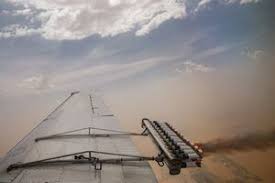The United Arab Emirates has taken remarkable strides this year in advancing its cloud-seeding program, conducting a staggering 172 cloud-seeding flights to enhance rainfall across the country. This ambitious initiative underlines the nation’s proactive approach to tackling water scarcity, adapting to climate change, and securing a sustainable future for generations to come.
A Bold Step Towards Water Sustainability
Water scarcity has long been a critical challenge for the UAE due to its arid desert climate and rapidly growing population. Traditional sources of water, such as groundwater and desalination plants, have limitations and environmental impacts. Recognizing this, the UAE has invested heavily in cloud-seeding technology as a sustainable alternative to increase natural rainfall.
Cloud seeding involves releasing substances like silver iodide into clouds to stimulate the formation of rain droplets. This innovative weather modification technique has been shown to increase precipitation, helping to replenish water reservoirs, improve soil moisture, and support agriculture.

Impressive Scale and Frequency of Operations
The 172 flights conducted in 2025 mark a record scale for the UAE’s cloud-seeding program. These flights have been carefully planned and executed during optimal weather conditions to maximize their effectiveness. The UAE’s National Center of Meteorology, alongside dedicated aviation teams, use cutting-edge technology including radar, satellites, and atmospheric sensors to identify suitable clouds and guide the seeding missions.
Each flight involves a specialized aircraft dispersing seeding agents into the clouds over strategic locations across the country. This consistent and widespread effort reflects the UAE’s unwavering commitment to enhancing its natural water cycle.


Positive Impacts on Agriculture and Environment
The increased rainfall generated through cloud seeding has a direct and meaningful impact on the UAE’s agriculture sector. In a region where farming depends heavily on irrigation, any boost in natural rainfall reduces water consumption and helps crops flourish. This leads to improved food security and supports the livelihoods of farmers.
Beyond agriculture, the additional rainfall helps replenish groundwater aquifers and supports local ecosystems. It also contributes to cooling the environment and improving air quality, essential factors in the country’s broader environmental sustainability goals.
Harnessing Technology and Expertise
The UAE’s cloud-seeding program is a prime example of how technology and expertise can be harnessed to address pressing environmental challenges. The National Center of Meteorology collaborates closely with international experts and research institutions to continuously refine and improve cloud-seeding techniques.
Investments in meteorological infrastructure, data analytics, and aviation capabilities enable precise targeting and efficient deployment. This ongoing innovation ensures that the program adapts to changing weather patterns and maximizes rainfall generation.
Strengthening Resilience Against Climate Change
As climate change intensifies, the Gulf region faces increasing risks such as higher temperatures, prolonged droughts, and unpredictable rainfall. The UAE’s cloud-seeding efforts are part of a broader strategy to build resilience against these threats.
By actively managing weather to increase rainfall, the country reduces its vulnerability to water shortages and supports sustainable urban and agricultural development. This forward-thinking approach demonstrates the UAE’s leadership in climate adaptation and environmental stewardship.
Community and Economic Benefits
The benefits of the cloud-seeding program extend beyond environmental impact. Increased rainfall supports economic growth by stabilizing agricultural productivity, reducing reliance on costly water imports, and lowering the operational costs of water treatment and desalination plants.
Furthermore, by securing water resources, the program contributes to social stability and improves quality of life for residents. Water security underpins many aspects of urban planning, health, and industry, making these cloud-seeding efforts foundational for the UAE’s long-term prosperity.

Future Outlook: Expanding Cloud-Seeding Ambitions
Looking ahead, the UAE plans to expand its cloud-seeding flights and invest in research to enhance the efficiency and environmental safety of the technique. Innovations such as combining cloud seeding with other weather modification technologies and improving data-driven forecasting will likely play a key role.
The nation’s vision includes scaling up these efforts to support the goal of achieving water security while protecting the environment. This integrated approach will ensure that the UAE remains a global leader in sustainable development amid changing climate realities.
Conclusion: A Sky Full of Promise
The UAE’s record 172 cloud-seeding flights in 2025 symbolize a powerful commitment to securing a sustainable water future. By embracing science, technology, and innovation, the nation is turning clouds into a valuable resource that nurtures the land, supports communities, and strengthens resilience.
This ongoing initiative offers inspiration for other arid regions facing similar water challenges, highlighting how proactive measures can transform environmental obstacles into opportunities. The skies above the UAE are not just a horizon but a beacon of hope for generations to come.
Do follow UAE Stories on Instagram















